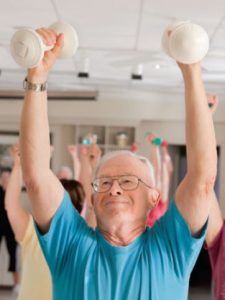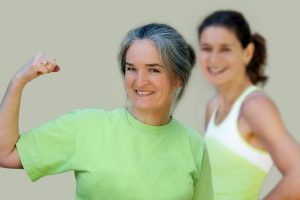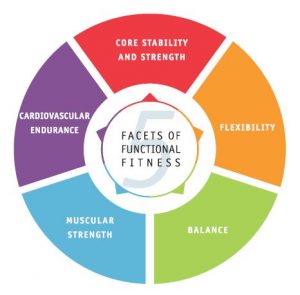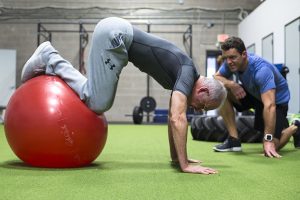Tap the Power of the Last 5% to Boost Workout Results
 “Whatever is worth doing at all, is worth doing well,” the aphorism tells us.
“Whatever is worth doing at all, is worth doing well,” the aphorism tells us.
I have my own version: Any exercise worth doing is worth doing completely…with a little added push at the end.
The reason why gets back to the scientific principle of progressive overload. While helping soldiers rehabilitate after World War II, U.S. Army physician Dr. Thomas L. DeLorme observed that they became stronger and more functional when he gradually increased the physical demands of their training. The realization that we make physical gains by asking our bodies to do just a little bit more than they could before is the basis of resistance training.
Think about what this means: your best opportunities to gain strength and endurance are right at the edge of your comfort zone, and a little beyond. If you can capitalize on this idea in your strength workouts, you will get more payoff from your efforts and advance at a faster pace.
Gradually pushing your limits
Here are some ways you can tap the power of the last 5%:
- Extend each repetition through a full range of motion. That way you’ll be engaging small muscles and the tapered areas of larger muscles that might otherwise stay unchallenged. If you want a better sense of what full range feels like, start by doing one or two reps with little or no weight. Exhale with the movement, letting your breath carry you through.
- Be relentless about holding your form through the entire movement. For example, keep your chest held high as you do a squat or a lunge—don’t let it waver a fraction of an inch as you approach the lowest point. Your movement may not extend quite so far, but you’ll be creating more muscular tension than you would by dropping your chest to get lower.
- Consciously squeeze your muscles as you push or lift, and give them an extra squeeze as you complete the rep.
- Rather than counting repetitions, keep doing them until you begin feeling muscle fatigue—and then try to do one more with good form. (If you feel your form breaking down, consider that set done.)
- If you can repeat an exercise 10 to 15 times with full range and excellent form, then—and only then—you may want to add a small increment of weight. Do one or two test reps to make sure you’re not straining.
So keep the last 5% in mind whenever you work out. That mindset will not only boost your results, but also increase your focus—and that can only be a good thing.
Image: Masterfile
 If you want to keep old age at bay, understanding functional fitness and its
If you want to keep old age at bay, understanding functional fitness and its 
 My last post discussed how
My last post discussed how